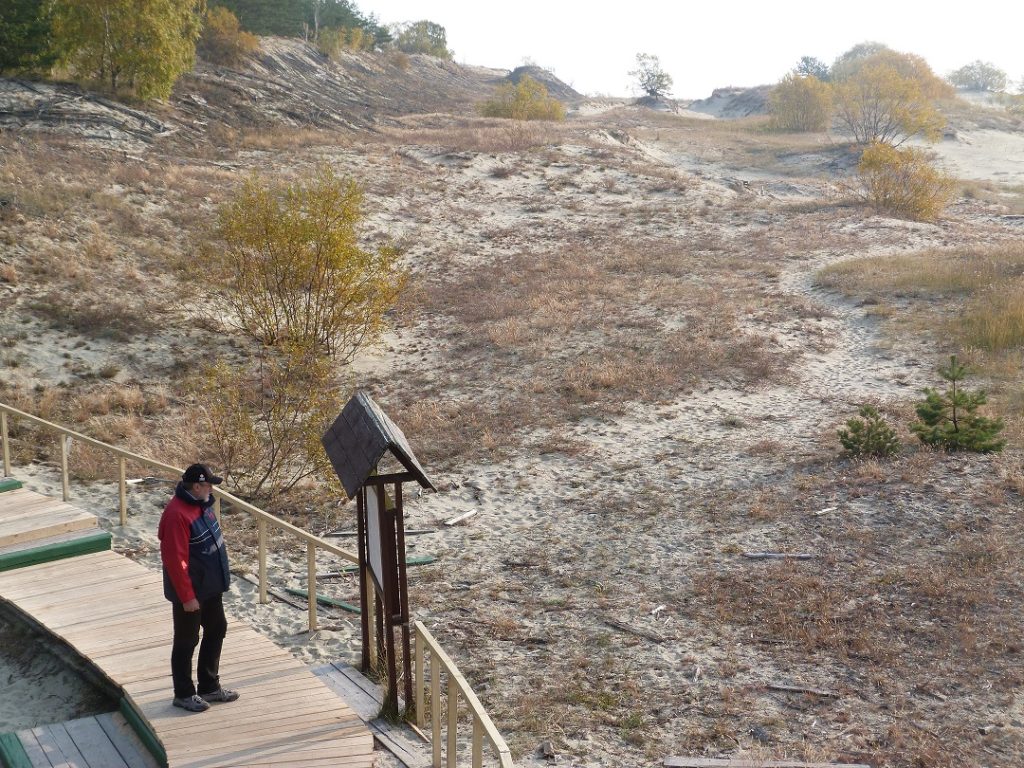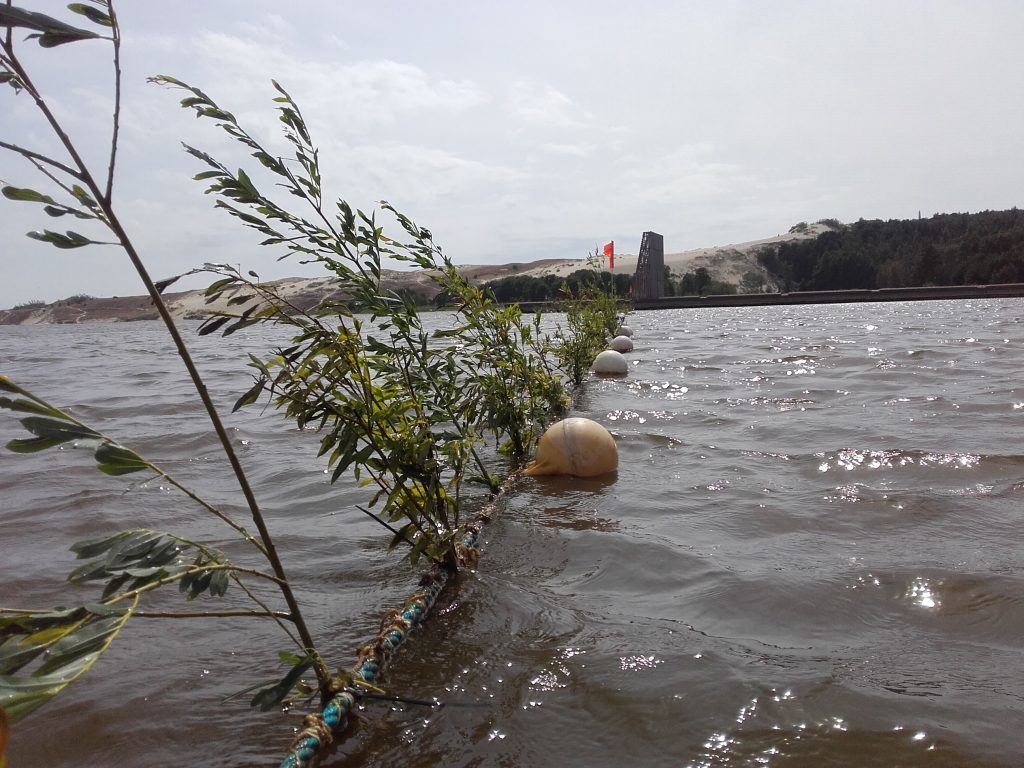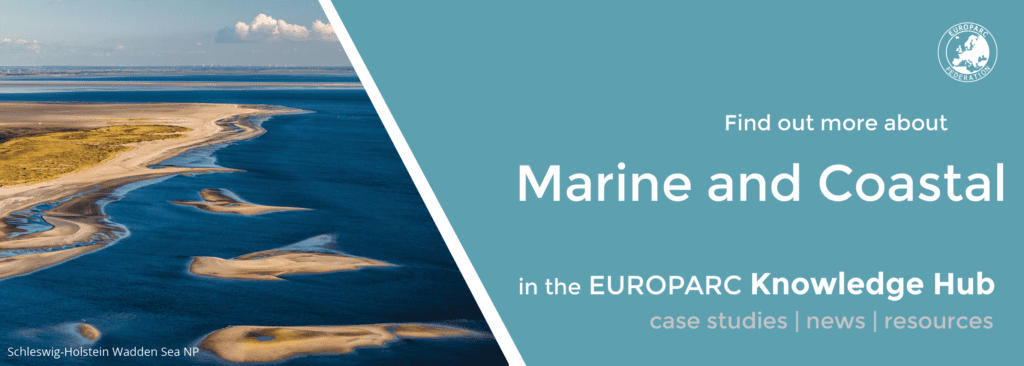Improving water quality with plant-living barriers: a case study from Lithuania
Installed Islands in Juodkrante - Photo: Live Lagoons Project
Improving water quality with plant-living barriers: The Curonian Spit National Park (Kuršių nerija Nacionalinis Parkas in Lithuanian) was established to protect one of the most unique landscapes in the coast of the Baltic Sea… This is how they have used plant-living barriers to improve water quality and decrease tourism seasonality.
Improving water quality: Sustainability and aesthetic values

Curonian Spit National Park, Lithuania
The National Park encompasses a very special feature: a narrow strip of sand surrounded by the Baltic Sea in the west and by the Curonian Lagoon in the east. The peninsula holds drifting sand dunes, pine forests, white sand beaches and receives a high number of tourists per year… but all in a very condensed period.
Due to the overexploitation of infrastructure (wastewater treatment system, roads, ferries, etc.), combined with the natural, fragile dune environment, the water quality of the lagoon and biodiversity of the Park were strongly affected. To open a new beach on the lagoon side, which is shallower and water conditions are calmer compared to the beaches on the Baltic seaside, was a potential solution to decrease seasonality.
However, according to the EU Bathing Water Directive, the microbiological quality of the nearshore water in terms of E. coli was an impediment to open a new beach in the lagoon for bathing. A dangerous problem not only in terms of aesthetic but also because of the increased resistant to human-pathogenic organisms.
Plant-living-barriers: Green and innovative technology

Living Barrier in Nida bathing site – Photo: LiveLagoons Project
The Curonian National Park participated with Klaipėda University and partners from Germany and Poland in the Interreg South Baltic program project “Use of active barriers for nutrient removal and local water quality improvement in the Baltic lagoons – LiveLagoons”.
They focused on so-called in-basin measures of research-based bathing water quality improvement, which is much smaller in scale than work in the whole water body, but could bring immediate result for local stakeholders. The measures covered:
- Reviewing the best available green technologies for seizing and removing nutrients from the shallow lagoons.
- Establish a network for community and stakeholder, green technology testing, retention, and nutrient removal in practice.
- Implementation (installation) of “living barriers” at selected test sites.
- Transferring knowledge and sharing good practice with and beyond other Southern Baltic lagoon communities.
They used ‘living barriers’ to semi-isolate some of the lagoon beaches on the Curonian Spit. These barriers are formed by floating matts, or rafts that actively filter the nearshore water-absorbing nutrients and facilitating degradation of E. coli.
These ‘living barriers’ are floating islands planted with native emergent macrophytes. There are several commercial applications called ‘living’ or ‘active’ barriers (e.g. life rafts, BIOHAVEN® LIVING SHORELINE) aimed at both restoration and rehabilitation of coastal habitats and local enhancement of water quality by nutrient absorption and removal.
Also, the project BaltCoast in consortium with the EU BONUs Programme managed studies (such as socio-economic data, survey collections and microbiological studies) to support the management actions and develope a Research-based Model.
Managing seasonal tourism: better quality = longer season
With the implementation of the plant-living barriers, the Park was able to:
- improve, on a small scale, the water quality on pilot installations.
- increase awareness of local stakeholders interested in water quality, tourism and innovation (SMEs) of the tested technological application.
- Increase interest from the tourists in the lagoon beaches and work towards decreasing seasonality
They aim to enhance the capacity of local communities to improve and protect their environment and to make use of sustainable tourism growth opportunities based on innovative green technologies and by identification of most promising scenarios for biodiversity conservation.
“The highlighted good practice not only adapts, implements and demonstrates the approach itself, but also enhances the capacity of local and regional decision-makers and managers to deal with forthcoming challenges for the environment related to global climate change.”
said Aristé Jurkiene, from the EUCC Baltic States Office. The EUCC is one of the key partners of the IMPACT project “Innovative Models for Protected Areas: exChange and Transfer”, funded by INTERREG Europe, who are implementing new solutions for the (sustainable) development of the region.
